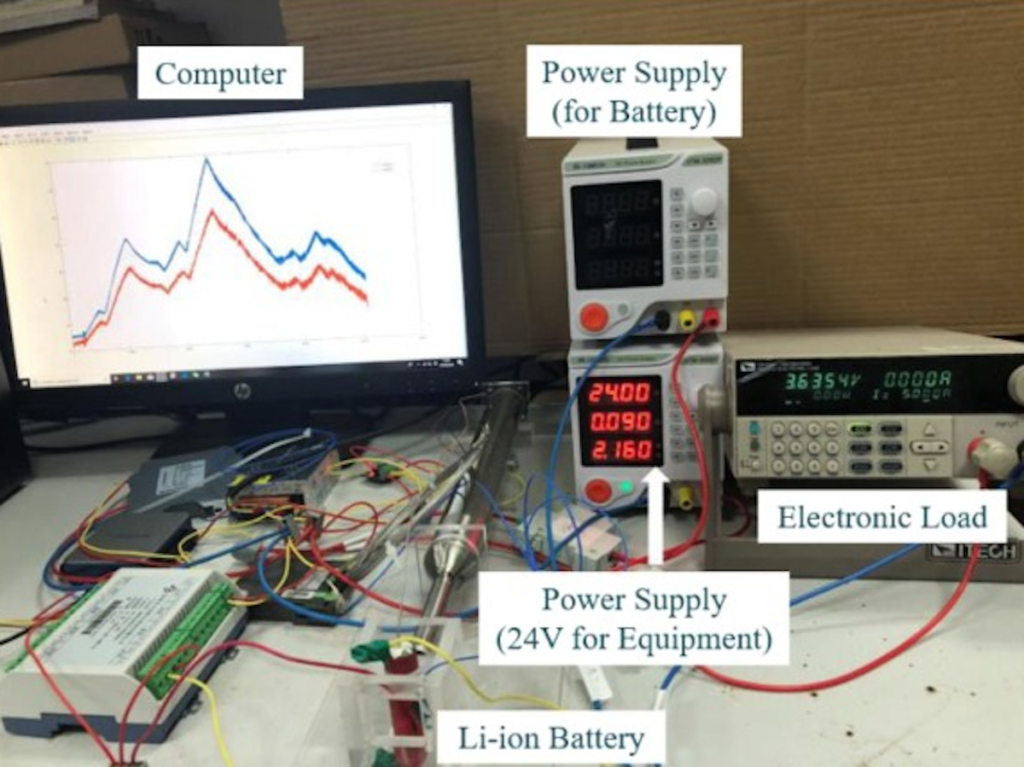Lithium-ion batteries Like samsung 25r are one of the most important things today and they can be found in almost all portable devices and even in electric vehicles. A few examples of devices that are powered by this great battery are cordless phones, tablets, electrical appliances, laptops, although there are many more things that almost every business uses. They have become popular because of their ability to store a large amount of energy in a very small space without being heavy, on the contrary, the batteries are very light.
The lithium-ion version of the batteries offers the same components inside the cell to produce energy from the chemical reaction (positive electrodes, negative electrodes, and electrolytes) as its the case with most batteries. In li-ion technology, which is most commonly used, for example in mobile devices, the positive electrode is made of lithium-iron-phosphate, the negative energy is made of carbon, and the electrolyte consists of a lithium salt in an organic solvent.
Of course, as with all technologies, the lithium-ion battery has evolved over the years where they have experimented and added various chemicals for different applications and increased performance. Some of the latest compositions and chemicals developed for lithium-ion batteries are lithium cobalt oxide, lithium manganese oxide, lithium iron phosphate, lithium nickel manganese cobalt oxide, lithium nickel cobalt aluminum oxide, lithium titanate. That is why we have different types of lithium-ion batteries and we can say with certainty that each battery is for itself, that none is the same.
What Kinds Of Lithium Batteries Can Be Found On The Market?
Lithium cobalt oxide batteries are made of lithium carbonate and cobalt. They have very stable capacities and specifically high energy. This is why they put them in the first choice for putting these batteries in smartphones, digital cameras, and laptops. The disadvantage of this battery is that they have a short lifespan, low thermal stability, and less load capacity, and therefore these batteries must be charged more often.
Lithium-manganese oxide batteries are supplied in two versions. The first version is with a spinel structure that has a 3D cathode frame for inserting and releasing li-ions during charging and discharging the battery. The second version comes in a layered rock-salt structure with alternating layers of lithium-ion and lithium-manganese ions on the cathode. Both of these batteries offer fast charging with a strong current and increased thermal stability. They provide increased safety and are therefore ideal for medical devices, power tools, and of course electric cars.
Lithium-iron-phosphate batteries use of course iron phosphate for the cathode along with the graphite electrode in combination with the metal mesh of the anode collector. These batteries are better because they are more tolerant at full charge and are much less susceptible to stress when exposed to some high voltages than other lithium-ion batteries. The disadvantage of these batteries is that they have less energy and have a lower voltage capacity than other batteries. But their advantage is that they offer increased safety and thermal capabilities even though they use low-resistance properties. Therefore, they are most ideal for electric motors and vehicles.
Lithium-nickel-manganese-cobalt-oxide batteries are made up of several elements that are commonly found in other lithium-ion batteries. Signs at the cathode used a combination of nickel, manganese, and cobalt. The exact ratio of these materials with which the cathode is made depends on the manufacturer. The usual combination ratios are usually 60 percent nickel, 20 percent manganese, and 20 percent cobalt. These batteries can have either high-specific energy or high-specific power, they cannot have both. Although with the inclusion of nickel in the cathode they managed to give the cell high-specific strength but with reduced stability, and that is its drawback. Manganese provides low internal resistance (although it has a lack of low specific energy), but with a combination of nickel and manganese, they get improved battery power. That is why these batteries are most suitable for EB drive systems and for wireless drive tools.
Lithium-nickel-cobalt-alumina batteries are still in the process of development and research and are therefore not common in the consumer industry. These batteries are promising because they provide highly specific energy options, power, and a decent lifespan.
Lithium-titanium batteries are the only fast-charging battery. The low-crystal lithium-titanium replaces the graphite in the anode of this battery, which gives it a larger surface area, allowing electrons to enter and exit the anode very quickly. The disadvantages here are the lower inherent voltage and the lower specific energy. And the advantages are that it is safe in terms of thermal tolerances. These batteries are used mainly in electric vehicles, bicycles with the possibility of using batteries, in the military and aerospace industry.

